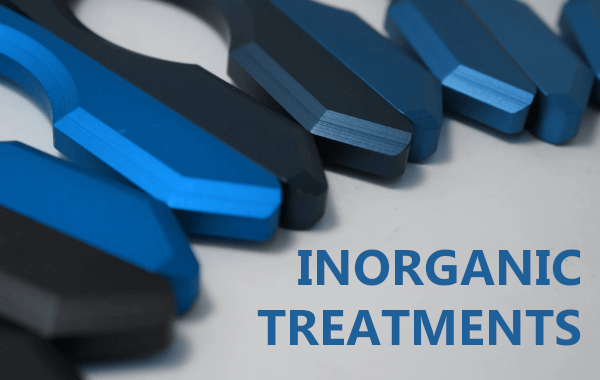
Last month we began to delve into the most common and widespread methods in the hydraulic field to prevent the corrosion of materials and we dedicated the October article to metallic coatings.
In this month’s post we continue to explore the world of the main methods to protect metal parts from corrosion by focusing our attention on inorganic coatings.
What are Inorganic Coatings?
With ‘inorganic coatings’ we mean the layers that are formed on the surface of various metallic materials immersed in suitable solutions as a result of chemical or electrochemical reactions.
The most common conversion processes in the hydraulic sector are phosphating and anodic oxidation.
What is Phosphating?
Phosphating is a chemical process through which the surface of a metal is altered by creating phosphate crystals chemically bonded to the base in order to exploit the properties of these compounds and thus improve resistance to corrosion.
It is mainly used for carbon steel or galvanized steel surfaces and is carried out by immersing the metal in acid solutions of metal phosphates (zinc phosphates, iron, manganese, nickel phosphates) which form a protective crystalline layer perfectly adhering to the metal surface.
If there is no additional layer on which the phosphating is the basis, the treatment ends with an oiling which provides an increase in corrosion resistance and an increase in the level of lubrication of the piece.
This layer, in addition to conferring resistance to corrosion, is an excellent base coat for anchoring additional painting cycles or for the temporary protection of semi-finished products.
The treatment can be carried out both by spray and by immersion; the latter in particular provides superior results both as it is effective even in inaccessible areas and because the layer has different characteristics.
The main types of phosphating are:
- Manganese phosphating
- Zinc phosphating
- Zinc-calcium phosphating
With phosphating, the treated surfaces take on variable colors depending on the base material, from light gray to dark grey, and involves an increase in thickness from 4 to 12 microns on the surface based on the type of material.
What is Anodic Oxidation?
Anodic oxidation, better known as anodisation, is an electrolytic process normally used for the treatment of aluminum in order to create a protective surface layer, improve its resistance to corrosion and its aesthetic characteristics.
It is also often used as a pre-treatment to anchor subsequent varnishing or painting cycles to the metal.
The anodising process goes through three stages:
- Preliminary surface preparation treatments, such as mechanical brushing, degreasing and chemical satin finishing, neutralisation and pickling
- Anodic oxidation, with possible coloring treatment;
- Finishing, which involves fixing in demineralised water to close the pores and make the anodic layer vitreous and waterproof and finally oiling, which is used to remove any residual dust from the fixing
The thickness of the film created by the anodisation ranges from 5 to 30/50 microns, depending on the duration of the oxidation and the conditions in which it is carried out.
Anodising is mainly used for applications on mechanical parts installed on machinery and systems used in the automotive, hydraulic, aeronautical, chemical, petroleum sectors and in general in all those markets where a high resistance to corrosion and wear is required, combined to a good aesthetic result.
For any doubts or further information regarding the most suitable treatment for your application, please contact our Sales Team.
Stay tuned!